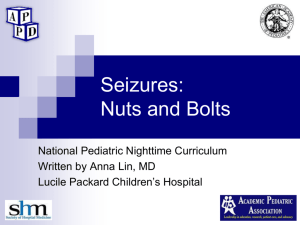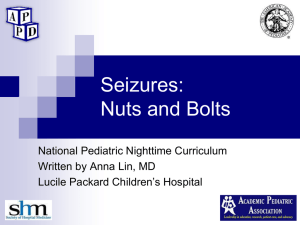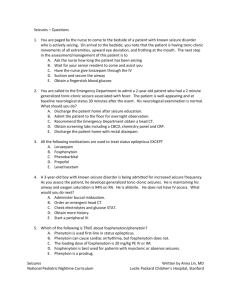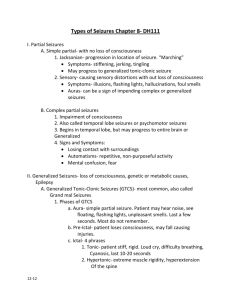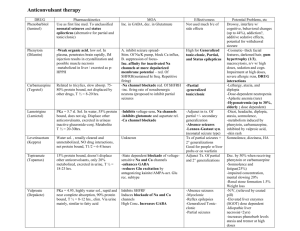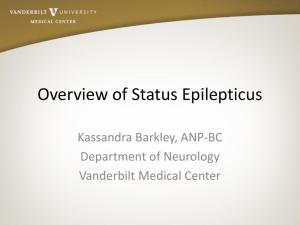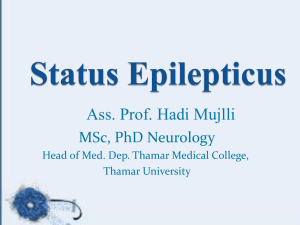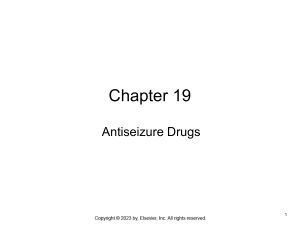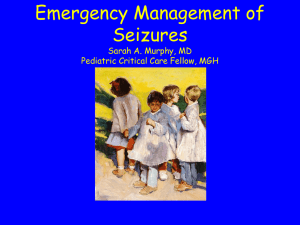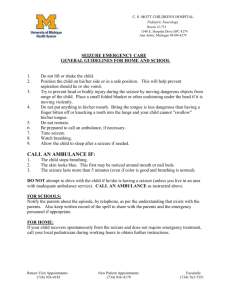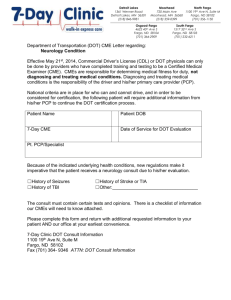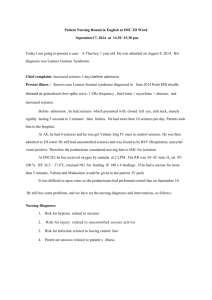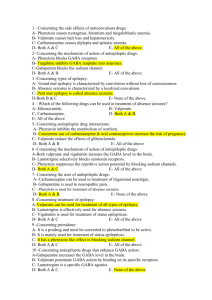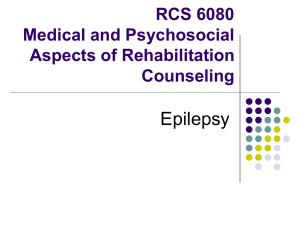Document
advertisement
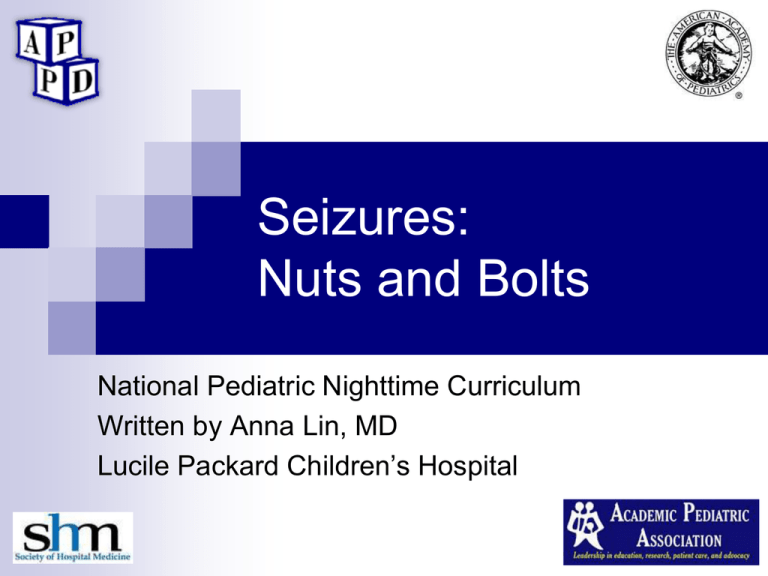
Seizures: Nuts and Bolts National Pediatric Nighttime Curriculum Written by Anna Lin, MD Lucile Packard Children’s Hospital Learning Objectives Understand the importance of initial assessment of patients who have seizures Be able to initiate treatment for patients who have seizures Know alternatives to first line treatments for status epilepticus Case #1 14-month-old developmentally normal boy who presents with generalized tonic-clonic seizures associated with fever. How would you initiate management? What other information would be useful to you as you are starting to intervene? What type of work-up does this patient need? Case # 2 12-year-old boy with obstructive hydrocephalus and VP shunt who presents with generalized tonic-clonic seizures for the past 15 minutes. How would you initiate management? What other information would be useful to you as you are starting to intervene? What type of work-up does this patient need? Types of Seizure Partial Seizures Simple vs. Complex Different types (motor, sensory, autonomic, “psychic”) Generalized Seizures Convulsive vs. Nonconvulsive Secondarily generalized vs. Secondary Status Epilepticus A patient is in status epilepticus if seizure activity has lasted > 30 minutes or there are multiple seizure episodes with failure to regain consciousness between episodes This is an arbitrary definition Management of Seizures Initial assessment Airway Breathing Circulation Call for help Hospitalist Neuro PICU/RRT Ask for more history How long has the patient been seizing? New-onset vs. known seizure disorder Baseline seizure frequency, is this typical or not? Events leading up to this episode Meds/triggers History of status Management of Seizures Consider rapid work-up for underlying etiologies CNS infection Acute HIE Metabolic disease Electrolyte imbalance TBI Drugs, intoxications, poisonings Cerebrovascular event Benzodiazepines Lorazepam (Ativan) 0.05-0.1 mg/kg IV q10-15 min, max dose 4 mg Less respiratory depression than diazepam, longer duration of action, slower onset (2 min) Midazolam (Versed) 0.15 mg/kg IV then continuous infusion of 1 mcg/kg/min Other formulations available: IM, buccal, intranasal, oral, and rectal Short half life, faster onset (1 min) Benzodiazepines (2) Diazepam (Valium) 0.05-0.3 mg/kg IV q15-30 min, max dose 10 mg Quick onset (10-20 sec), rectal formulation, higher risk of respiratory depression Not considered first line Lower efficacy Increased respiratory depression Fosphenytoin/Phenytoin Fosphenytoin (Cerebyx) 15-20 mg PE/kg IV/IM, may infuse 3 mg/kg/min (max 150 mg/min), max dose 1500 mg PE/24 hours Prodrug of phenytoin which has fewer side effects Can cause cardiac arrhythmias Avoid for status with myoclonic seizures or absence seizures Consider alternatives in seizures associated with illicit drug use Phenytoin (Dilantin) Not used first line as there are many side effects Cardiac arrhythmias/hypotension associated with propylene glycol used to dissolve phenytoin Local pain, venous thrombosis and purple glove syndrome skin necrosis, limb ischemia amputation Barbiturates Phenobarbital (Luminal) 15-20 mg/kg IV/IM, may repeat 5 mg/kg IV q1530 min, max dose 40 mg/kg Prolonged sedation, respiratory depression, hypotension Generally used after failure of benzodiazepines and fosphenytoin Pentobarbital (Nembutal) 12 mg/kg IV followed by 5 mg/kg/hr infusion Titrate to EEG inactivity Used for refractory status epilepticus Other agents Propofol (Diprivan) Rapid onset, short duration of action Mechanism of action is unclear Hypotension, apnea and bradycardia are common Intubation and ventilation are required for the use of this medication Prolonged use can result in hypertriglyceridemia and pulmonary edema Associated with fatal acidosis and rhabdomyolysis Other agents (2) AEDs with some data to suggest use in refractory SE Valproic acid (Depakote): not yet approved for SE, some data to support its use Topiramate (Topamax): PO only Levetiracetam (Keppra): adult data only References AAP Subcommittee on Febrile Seizures. Clinical Practice Guideline—Neurodiagnostic Evaluation of the Child With a Simple Febrile Seizure. Pediatrics 2011, 127(2): 389-394 Singh RK, Gaillard WD. Status Epilepticus in Children. Current Neurology and Neuroscience Reports 2009, 9:137–144 Wilfong A. Overview of the classification, etiology, and clinical features of pediatric seizures and epilepsy. Up To Date, 2011.
